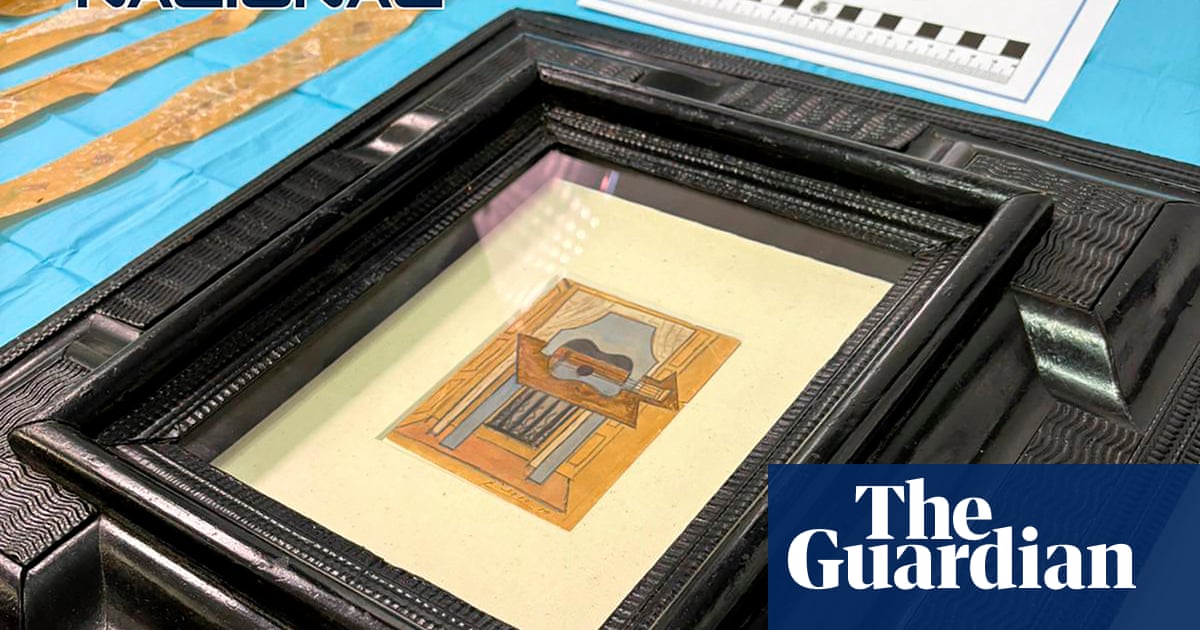French investigators are analysing more than 150 DNA samples, fingerprints and other traces from tools and safety gear left by the thieves who broke into the Louvre museum and escaped with crown jewels worth an estimated €88m (£76m).
Five days after the brazen heist from the world’s most-visited museum, Laure Beccuau, the Paris prosecutor, said she had “a small hope” the jewels could still be recovered and was “optimistic” about the investigation’s outcome.
She expected that “in the next few days, results will perhaps provide us with leads, particularly if the perpetrators have criminal records”, she told told Ouest-France newspaper.
The gang of four pulled up outside the Louvre at 9.30am on Sunday morning, soon after it opened, in a stolen furniture removal truck fitted with a 30-metre (90ft) extending ladder and lift, in which two of them mounted to the first-floor Apollo gallery, which houses France’s remaining crown jewels.
Wearing hi-vis vests to resemble construction workers, they smashed an unsecured window and then used disc cutters to open two display cases in the ornate gallery before descending again in the bucket lift and making their escape on the back of motorbikes driven by the other two members of the gang.
However, the thieves failed in their hurried attempt to set fire to the truck, and also left behind a helmet, angle grinders and disc cutters, a hi-vis vest and several other items, Beccuau said, all of which were being analysed in Paris and nearby crime labs.
She added that minute analysis of video footage from public and private surveillance cameras, including on motorways, had further helped investigators to follow the gang’s route “in Paris and the surrounding areas”, but declined to give further details.
More than 100 investigators, including officers from France’s BRB organised crime squad and specialists in trafficked artworks and cultural goods, are working on the case. Beccuau said investigators were “exploring all hypotheses” – including the possibility that the thieves had help from inside the Louvre.
She said the robbery bore “all the marks of an organisation: the careful preparation, the audacity of the modus operandi, the type of jewellery targeted, the escape.”
The whole operation lasted less than seven minutes, with the two thieves who entered the gallery spending 3 minutes and 58 seconds inside. While they dropped a diamond and emerald-studded crown during their getaway, they succeeded in fleeing with a total of eight 19th-century, richly gem-encrusted pieces.
Those included an emerald and diamond necklace that Napoleon I gave his second wife, Marie Louise, and a diadem set with 212 pearls and nearly 2,000 diamonds that had once belonged to the empress Eugénie, wife of Napoleon III.
It has emerged that a very similar heist was outlined in one of the 52 volumes of a popular children’s book series beginning in the 1960s that stars Fantômette, a girl crime-fighter aged about 12 who is often described as France’s first female superhero.
In Appelez Fantômette (Call Fantômette), a character describes exactly how he would break into the Louvre, steal a diamond, and escape, all in a matter of minutes and without harming anyone.
“Listen to me,” the character, speaking in his prison cell, says. “All you have to do is place a ladder up against the wall and climb up to the first floor; indeed, there is only one floor. Then, you break a window-pane.
“You advance 10 metres, smash the display case with a hammer and bingo! You have your hands on the objet. Ah, if only I wasn’t locked up in here, I can assure you it would be done in a flash.”
Amid experts’ fears that the jewels taken in Sunday’s dramatic heist were far too recognisable to be sold in their present state and had probably been stolen to be broken down into their constituent gems and melted-down metal, Beccuau stressed time was of the essence.
She said that with worldwide media attention focused on the robbery, there was a small hope that “the robbers will not really dare move very far [and] we can recover the jewels if we can move fast enough.”
Citing museum surveillance camera footage, Le Parisien newspaper said the thieves had initially been unable to open the display cases in the Apollo gallery, but had eventually been able to smash small openings in the glass and pull the jewels out.
The paper said the museum’s internal alarm systems had functioned normally, with a first alarm going off at 9.34am when the robbers smashed the balcony window looking on to the Quai François Mitterrand. Footage shows two attendants arriving in the gallery but then retreating, possibly fearing the thieves were armed, it said.
The Louvre’s director, Laurence des Cars, on Wednesday acknowledged a “terrible failure” of security, admitting there was “highly insufficient” security camera coverage of the outside walls of the world’s largest museum.
Des Cars told French senators that security cameras did not adequately cover the thieves’ point of entry. “The only camera installed there is directed westward, so did not cover the balcony involved in the break-in,” she said. More generally, she added, while there were “some perimeter cameras”, they were “ageing”.
The museum director nonetheless defended the museum’s ongoing €80m (£70m) security programme, saying security camera coverage was being increased across the entire 37-hectare site, including “video surveillance covering all facades”.

.png) 5 hours ago
4
5 hours ago
4

















































